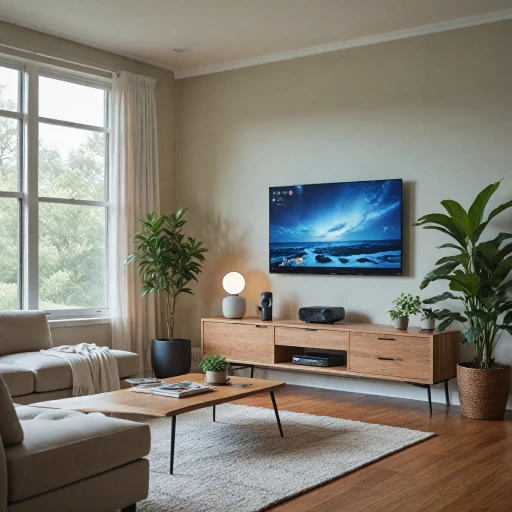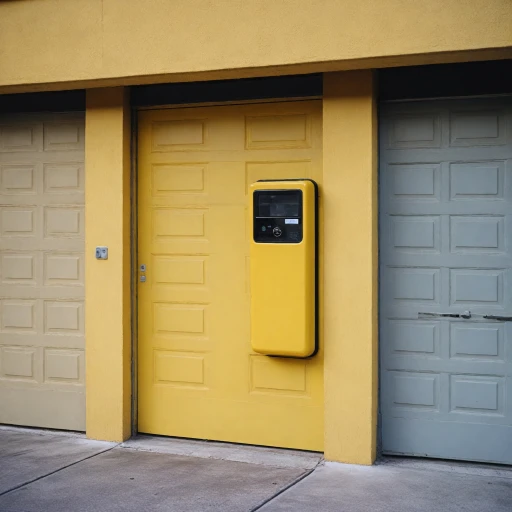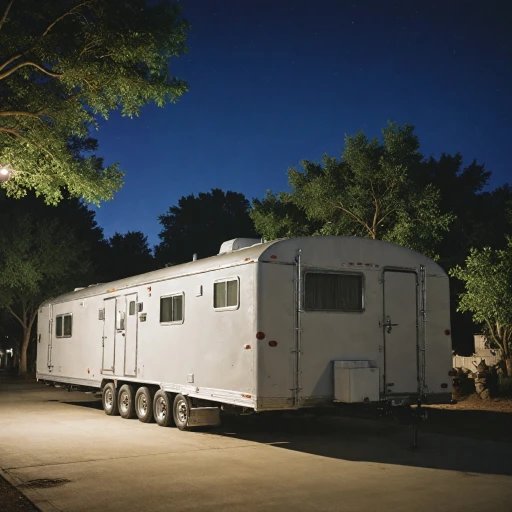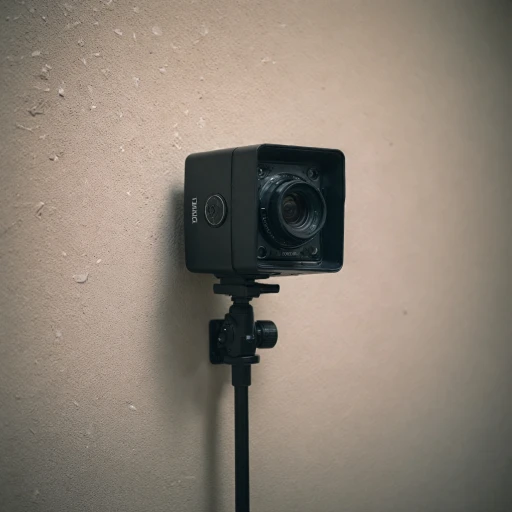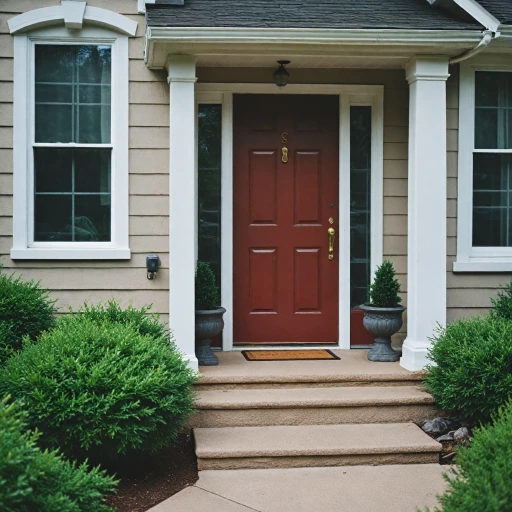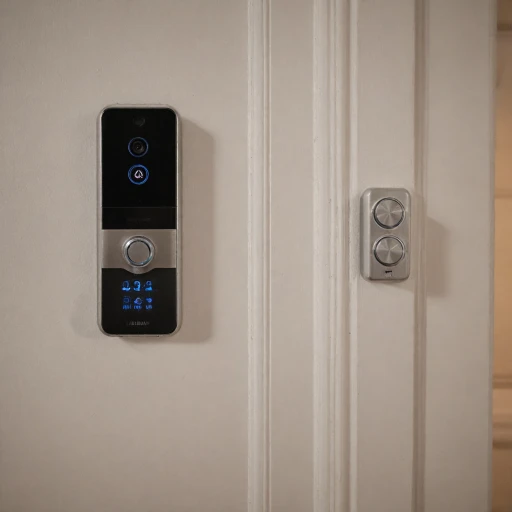
Understanding Motion Sensors in Home Security
Getting to Grips with Motion Detectors in Homes
Motion sensor technology is a cornerstone of modern home security systems, providing a seamless way to detect intrusions and unwarranted movements inside your property. The principle is simple: when movement is detected by the sensor, the device will trigger an alert or activate another system, such as turning on lights or starting a video recording. This is particularly appealing for those prioritizing efficiency and immediacy in their home security setups. For many smart home enthusiasts, integrating motion detectors can significantly enhance the efficacy of their security systems. Various types of sensors, whether using infrared, microwave, or dual technology, can cater to different needs and environments. Understanding the best fit for your home's specific circumstances is crucial. Some sensors, like occupancy sensors, are sensitive enough for seamless use with home assistants. A popular choice among users is the Xiaomi motion sensor, widely praised for its ability to integrate with home automation platforms like Zigbee MQTT. This system allows for more nuanced configurations that can, for instance, turn lights on automatically when movement is detected in a room. Most motion detectors are designed to be energy efficient, often powered by a long-lasting battery. Routine checks and maintenance can ensure they remain functional and reliable over time. A well-installed sensor will constantly safeguard your home, giving peace of mind, especially when paired with other smart home devices. Understanding the technologies and configurations that best suit your environment is critical. Whether opting for a simple device or one integrated with a sophisticated home assistant setup, knowing how to effectively place and maintain these sensors can be your first step towards a safer home.Types of Motion Sensors Available
Exploring Various Options in Motion Detection
In today's smart home era, motion sensors come in various types and each offers a unique advantage in enhancing home security. Choosing the right sensor depends on several factors including the distinct features of each type.- Passive Infrared (PIR) Sensors: These are the most common motion detectors used in home security. PIR sensors work by detecting infrared radiation emanating from objects in their field of view. When a significant change in infrared levels is detected, such as a human entering the room, the sensor triggers an alert.
- Microwave Sensors: Unlike PIR, microwave sensors detect motion by emitting microwave pulses. They measure the reflections off moving objects, thus providing a greater coverage area. However, their sensitivity can occasionally lead to false triggers.
- Dual-Technology Sensors: These combine both PIR and microwave technologies to reduce false alarms. They will only trigger if both sensors detect motion, offering a more reliable solution for security purposes.
- Ultrasonic Sensors: Utilizing sound waves, these sensors detect motion through changes in sound wave frequency reflecting off objects. Though effective, they can be prone to interference from external noises.
- Tomographic Motion Detection: For large areas, tomographic sensors are ideal. By forming a network of nodes that create a mesh signal field, they can detect motion by sensing disturbances in the signal.
- Occupancy Sensors: Primarily used for energy conservation in homes, they detect the presence of individuals and automatically turn lights on or off.
Integration with Smart Home Systems
Connecting Smart Systems with Motion Sensors
Integrating motion sensors into your smart home system is an effective way to enhance security and automate daily routines. By connecting motion detectors with various home devices, activities can be streamlined for convenience and protection. Here's how integration enhances your home's operational efficiency: Firstly, when a motion sensor detects movement inside a room, the device can trigger actions such as turning lights on or off. Using a platform like Home Assistant, you can configure sensors to respond differently based on time of day or occupancy status. For instance, presence detection can guide your system to turn lights on at night, ensuring improved visibility and safety. Motion sensors compatible with communication protocols like Zigbee offer seamless integration capabilities. Zigbee's low-power usage is particularly beneficial for battery-operated devices like occupancy sensors, enhancing their longevity. For those using Tuya Zigbee configurations, connectivity is further facilitated, allowing for a cohesive smart home ecosystem. Moreover, integrating motion sensors with smart home assistants such as Google Home or Alexa enables voice command functionalities. You can instruct your assistant motion to adjust the setup, configure motion detected alerts, or manage routines. For example, if a binary sensor in your home detects motion, it can notify you via voice alert, further enhancing security. When integrating any device, ensure compatibility and proper configuration to avoid disruptions. It's also wise to evaluate privacy features, as automated systems might record or store personal data inadvertently. By understanding these integration possibilities, you'll be better equipped to make informed decisions about the right motion sensor setup for your home. For more tips on enhancing security setups and choosing the right configurations, explore our comprehensive guide.Installation and Maintenance Tips
Setting Up and Maintaining Your Motion Sensors Elegantly
Once you've decided on the right motion sensor for your home, it's essential to know how to set it up and maintain it effectively. A seamless setup and routine maintenance will ensure the longevity and reliability of the sensors in detecting motion and safeguarding your home.- Location is Key: The placement of your motion sensor can significantly impact its efficacy. Ideally, install the device in high-traffic areas such as hallways or entry points where anyone moving inside the house will quickly trigger the motion detected feature. Avoid placing sensors near windows or HVAC vents, as this can lead to false alarms due to temperature changes.
- Configuration and Calibration: Many smart motion sensors, including those from brands like Xiaomi and Tuya Zigbee, offer a range of configuration options. Integrate your sensor home system with a smart home assistant to optimize its settings. Ensure the sensor's sensitivity aligns with your home's layout and occupancy trends to prevent unnecessary triggers.
- Battery Power and Connection: Monitor the battery life of your motion detection devices regularly and replace them as needed. Consider using Zigbee or Zigbee MQTT-compatible sensors for a more reliable wireless connection. A stable network can mean the difference between your lights turning on at the right time and sitting in the dark.
- Maintenance for Longevity: Consistent upkeep ensures your motion detectors remain in prime condition. Regularly clean the lens and exterior casing to prevent dust and debris from impairing the device's function. Test your motion and occupancy sensors periodically to confirm they respond correctly and efficiently.
- Utilizing Home Assistant Features: Many smart home systems allow for advanced automation settings. You can link your motion sensor directly to trigger other devices around your house, such as turning lights on in specific rooms based on movement detected.
Privacy Considerations and Best Practices
Preserving Privacy While Utilizing Motion Sensors
When integrating motion sensors into your home security system, privacy remains a crucial consideration. Understanding the potential footprint of these devices is essential. Motion sensors, including those employing Zigbee, Tuya Zigbee, or other wireless configurations, often gather data that needs responsible management. Following best practices can aid in maintaining individual privacy without compromising security.
- Data Management: Many smart home devices like Xiaomi sensors and those integrated via home assistant platforms collect occupancy data when movement is detected. It's vital to understand how this data is stored and used. Opt for sensors that give you control over your data and allow customization of data storage preferences.
- Privacy Settings: Configure your sensors home system to respect privacy zones and limit unnecessary data fetching. Consider creating limited operational zones in rooms where privacy is most needed.
- Routine Assessments: Regularly reviewing your motion detector setup can prevent unnecessary privacy intrusions. Adjust the sensitivity of the movement detector to prevent false triggers, ensuring they activate only when needed.
- Secure Connectivity: Safeguarding network security when using Zigbee MQTT or other wireless protocols is imperative. Regularly updating device firmware and employing strong passwords can prevent unauthorized access.
Finally, choosing suitable motion sensors aligned with your security needs can enhance your privacy strategy. For instance, integrating a temperature and humidity sensor can offer environmentally responsive solutions without additional intrusion.
Choosing the Right Motion Sensor for Your Home
Selecting the Perfect Motion Sensor for Your Needs
When it comes to choosing the right motion sensor for your home, several factors should be taken into account to ensure efficiency and compatibility. The diversity in types of devices, ranging from passive infrared sensors to ultrasonic and microwave detectors, can fulfill a variety of security needs. By considering the unique characteristics of each type and their interaction with other smart home devices, you can fine-tune your security setup to meet your specific requirements.
- Understand the environment: Consider the area where you'll be placing the motion detector. If it's in a secluded room, you might favor a sensor with a broader range, like a microwave sensor. In contrast, a living room might benefit from a less invasive option like a passive infrared detector.
- Power source and configuration: Think about whether you want a battery-powered device for easier installation or a wired one that might require more effort but offers uninterrupted power. Also, evaluate the need for integration with protocols like Zigbee MQTT, especially if you're already using Tuya Zigbee devices.
- Compatibility with smart home systems: Ensuring your motion sensors can integrate seamlessly with your home assistant system can offer improved functionality. Systems like Xiaomi, which offer advanced configuration options, can automatically turn lights on or off based on movement detected, contributing to energy efficiency and enhanced security.
- Privacy and data security: Always consider how your sensor processes and relays data. Devices that offer stringent data encryption mechanisms can help maintain privacy while efficiently monitoring any occupancy.
- Additional sensor features: Some motion sensors double as temperature and humidity monitors. This multi-functionality can be helpful in maintaining optimal home conditions all while enhancing security.
Ultimately, selecting the right motion detector entails balancing the technology's capabilities with your specific needs and the existing smart ecosystem in your home. Careful evaluation of these factors can help you achieve a harmonious, efficient, and secure home environment."



